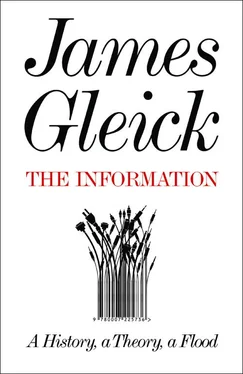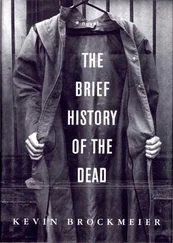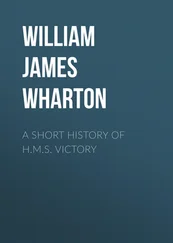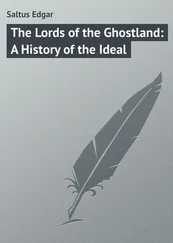In the ancient world, alphabetical lists scarcely appeared until around 250 BCE, in papyrus texts from Alexandria. The great library there seems to have used at least some alphabetization in organizing its books. The need for such an artificial ordering scheme arises only with large collections of data, not otherwise ordered. And the possibility of alphabetical order arises only in languages possessing an alphabet: a discrete small symbol set with its own conventional sequence (“ abecedarie, the order of the Letters, or hee that useth them”). Even then the system is unnatural. It forces the user to detach information from meaning; to treat words strictly as character strings; to focus abstractly on the configuration of the word. Furthermore, alphabetical ordering comprises a pair of procedures, one the inverse of the other: organizing a list and looking up items; sorting and searching. In either direction the procedure is recursive (“ recourse, a running backe againe”). The basic operation is a binary decision: greater than or less than. This operation is performed first on one letter; then, nested as a subroutine, on the next letter; and (as Cawdrey put it, struggling with the awkwardness) “so of all the rest. &c.” This makes for astounding efficiency. The system scales easily to any size, the macrostructure being identical to the microstructure. A person who understands alphabetical order homes in on any one item in a list of a thousand or a million, unerringly, with perfect confidence. And without knowing anything about the meaning.
Not until 1613 was the first alphabetical catalogue made—not printed, but written in two small handbooks—for the Bodleian Library at Oxford. The first catalogue of a university library, made at Leiden, Holland, two decades earlier, was arranged by subject matter, as a shelf list (about 450 books), with no alphabetical index. Of one thing Cawdrey could be sure: his typical reader, a literate, book-buying Englishman at the turn of the seventeenth century, could live a lifetime without ever encountering a set of data ordered alphabetically.
More sensible ways of ordering words came first and lingered for a long time. In China the closest thing to a dictionary for many centuries was the Erya , author unknown, date unknown but probably around the third century BCE. It arranged its two thousand entries by meaning, in topical categories: kinship, building, tools and weapons, the heavens, the earth, plants and animals. Egyptian had word lists organized on philosophical or educational principles; so did Arabic. These lists were arranging not the words themselves, mainly, but rather the world: the things for which the words stood. In Germany, a century after Cawdrey, the philosopher and mathematician Gottfried Wilhelm Leibniz made this distinction explicit:
Let me mention that the words or names of all things and actions can be brought into a list in two different ways, according to the alphabet and according to nature. . . . The former go from the word to the thing, the latter from the thing to the word.
Topical lists were thought provoking, imperfect, and creative. Alphabetical lists were mechanical, effective, and automatic. Considered alphabetically, words are no more than tokens, each placed in a slot. In effect they may as well be numbers.
Meaning comes into the dictionary in its definitions, of course. Cawdrey’s crucial models were dictionaries for translation, especially a 1587 Latin-English Dictionarium by Thomas Thomas. A bilingual dictionary had a clearer purpose than a dictionary of one language alone: mapping Latin onto English made a kind of sense that translating English to English did not. Yet definitions were the point, Cawdrey’s stated purpose being after all to help people understand and use hard words. He approached the task of definition with a trepidation that remains palpable. Even as he defined his words, Cawdrey still did not quite believe in their solidity. Meanings were even more fluid than spellings. Define , to Cawdrey, was for things, not for words: “ define, to shew clearely what a thing is.” It was reality, in all its richness, that needed defining. Interpret meant “open, make plaine, to shewe the sence and meaning of a thing.” For him the relationship between the thing and the word was like the relationship between an object and its shadow.
The relevant concepts had not reached maturity:
figurate, to shadowe, or represent, or to counterfaite
type, figure, example, shadowe of any thing
represent, expresse, beare shew of a thing
An earlier contemporary of Cawdrey’s, Ralph Lever, made up his own word: “ saywhat, corruptly called a definition: but it is a saying which telleth what a thing is, it may more aptly be called a saywhat.” This did not catch on. It took almost another century—and the examples of Cawdrey and his successors—for the modern sense to come into focus: “Definition,” John Locke finally writes in 1690, “being nothing but making another understand by Words, what Idea the Term defin’d stands for.” And Locke still takes an operational view. Definition is communication: making another understand; sending a message.
Cawdrey borrows definitions from his sources, combines them, and adapts them. In many case he simply maps one word onto another:
orifice, mouth
baud, whore
helmet, head peece
For a small class of words he uses a special designation, the letter k: “standeth for a kind of.” He does not consider it his job to say what kind. Thus:
crocodile, k beast
alablaster, k stone
citron, k fruit
But linking pairs of words, either as synonyms or as members of a class, can carry a lexicographer only so far. The relationships among the words of a language are far too complex for so linear an approach (“ chaos, a confused heap of mingle-mangle”). Sometimes Cawdrey tries to cope by adding one or more extra synonyms, definition by triangulation:
specke, spot, or marke
cynicall, doggish, froward
vapor, moisture, ayre, hote breath, or reaking
For other words, representing concepts and abstractions, further removed from the concrete realm of the senses, Cawdrey needs to find another style altogether. He makes it up as he goes along. He must speak to his reader, in prose but not quite in sentences, and we can hear him struggle, both to understand certain words and to express his understanding.
gargarise, to wash the mouth, and throate within, by stirring some liquor up and downe in the mouth
hipocrite, such a one as in his outward apparrell, countenaunce,& behaviour, pretendeth to be another man, then he is indeede, or a deceiver
buggerie, coniunction with one of the same kinde, or of men with beasts theologie, divinitie, the science of living blessedly for ever
Among the most troublesome were technical terms from new sciences:
cypher, a circle in numbering, of no value of it selfe, but serveth to make up the number, and to make other figures of more value
horizon, a circle, deviding the halfe of the firmament, from the other halfe which we see not
zodiack, a circle in the heaven, wherein be placed the 12 signes, and in which the Sunne is mooved
Not just the words but the knowledge was in flux. The language was examining itself. Even when Cawdrey is copying from Coote or Thomas, he is fundamentally alone, with no authority to consult.
Читать дальше











